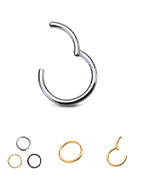
We collect basic website visitor information on this website and store it in cookies. We also utilize Google Analytics to track page view information to assist us in improving our website.
At Perfect Image, we pride ourselves on offering professional body and ear piercing services and high-quality body jewelry across all our locations in Kitchener-Waterloo, Brantford, London, Barrie, Banff, and Grand Bend.
Looking for information on body or ear piercings? Here, you’ll find info on piercing requirements, the types of piercing services we offer, piercing aftercare instructions, FAQs, and our body jewelry selection. Whether you're considering a new ear piercing or another style, visit a Perfect Image location near you for a walk-in piercing appointment!
We follow strict safety and hygiene standards, with sterilized tools and clean facilities. We also focus on creating a calm and welcoming atmosphere, ensuring you feel at ease throughout the entire process. Afterward, we give you easy-to-follow aftercare instructions and offer products to help your piercing heal well. Find your nearest Perfect Image for a comfortable and clean piercing experience!
Our piercers are experienced in many types of piercings, including ear piercing services, and provide personalized aftercare advice tailored to your specific piercing and lifestyle. Whether you're getting a new ear piercing or another body piercing, they ensure the procedure is done with precision and offer clear guidance on how to care for it as it heals. Meet our piercers at your preferred location for a walk-in appointment today!
We offer high-quality piercing jewelry that’s perfect for both healing and style, with options designed to support your piercing during healing and look great afterward. If you’re looking for something more intricate after your piercing heals, check out our online body jewelry store.
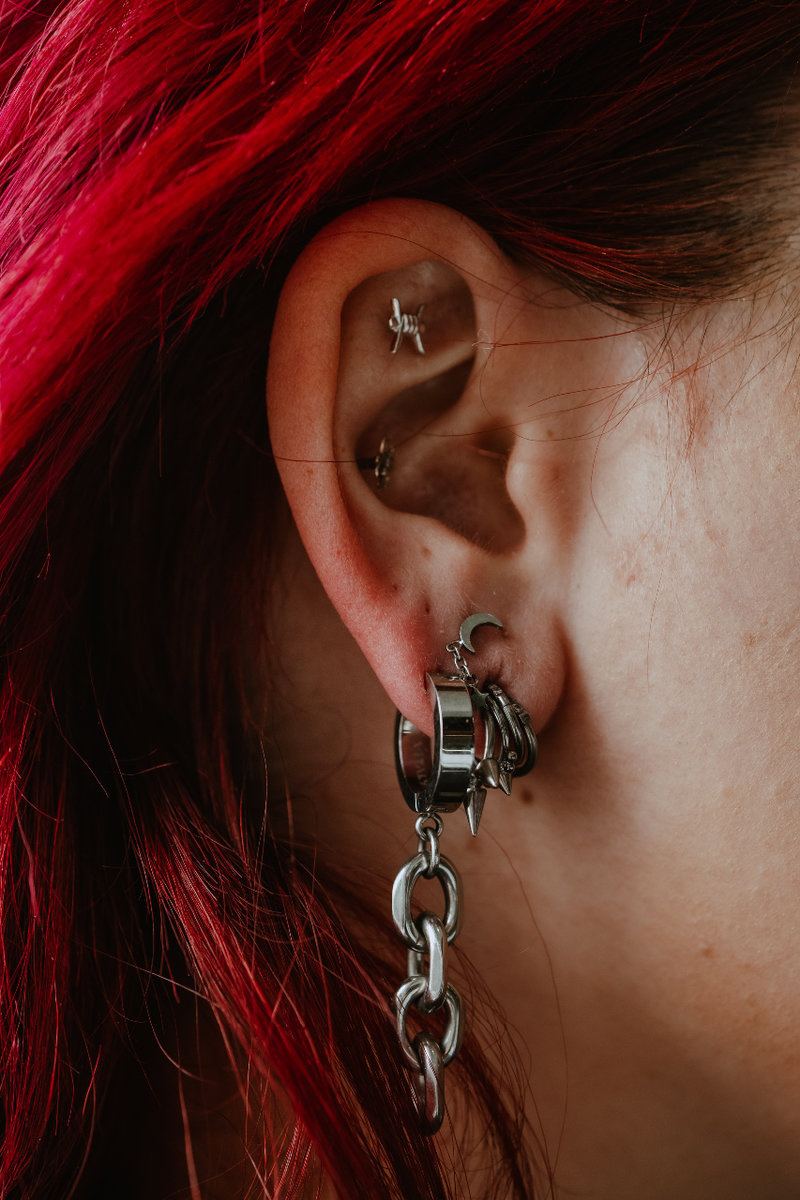
For most piercings you must be 16 years of age to sign for yourself, and you will be asked to provide valid government photo ID.
If you’re under 16 you may still be able to get pierced with a parent present, provided you have valid photo ID for both of you. That being said, we do reserve the right to refuse piercings on an individual basis. This is usually based on anatomy, but sometimes it may just be something your piercer is not comfortable doing on a minor.
Your piercer will advise you on how to take care of your piercing using the aftercare kit available for purchase in store. Before you get pierced you will be required to fill out a waiver, this is for legal purposes and to make us aware of any medical conditions that may affect your piercing or healing. When the appropriate paperwork is completed, you will have the opportunity to ask any questions you may have, to ensure that you are satisfied before beginning.
*For some piercings like genitals, nipples, and surface ones, you must be 18, regardless of parental consent. Contact your Perfect Image for information on these types of piercings and if your piercer will perform them.
*Persons that are intoxicated, pregnant, nursing, or incapable of consent due to mental incapacity will be refused.
Lobe
Traditional and multiple lobe piercings.
Helix
Upper ear cartilage, including forward and double helix.
Tragus
Small cartilage in front of the ear canal.
Anti-Tragus
Opposite the tragus, above the lobe.
Conch
Inner ear cartilage.
Daith
Fold of cartilage above the ear canal.
Rook
Cartilage ridge in the upper ear.
Industrial
Two piercings connected by a barbell.
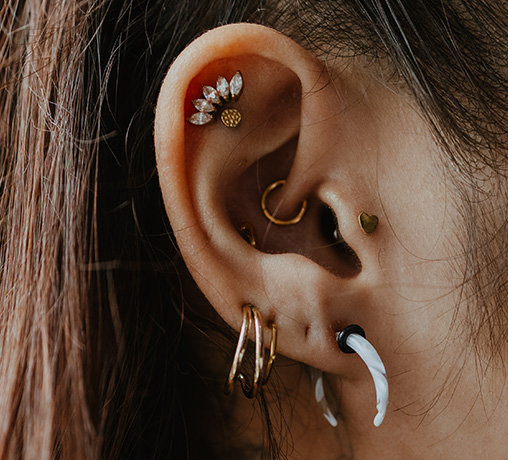
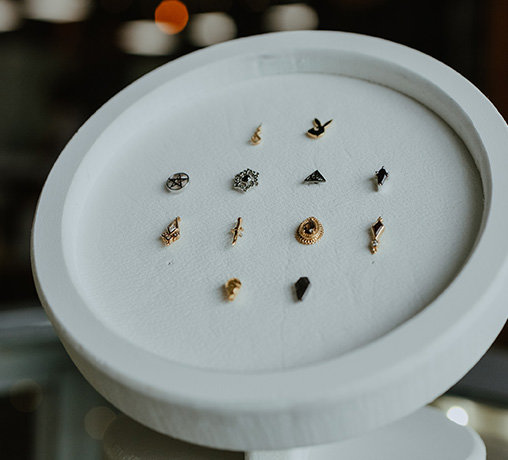
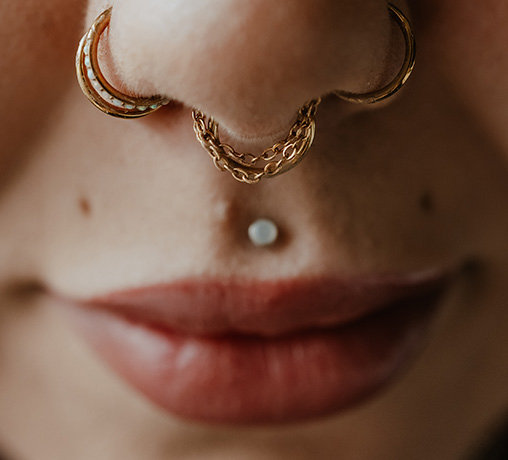
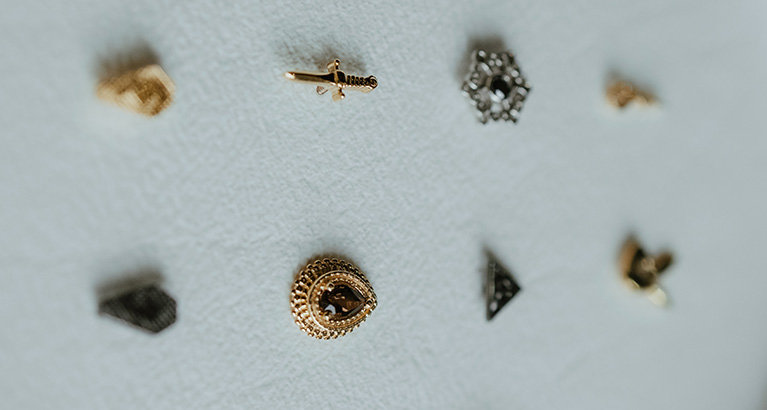
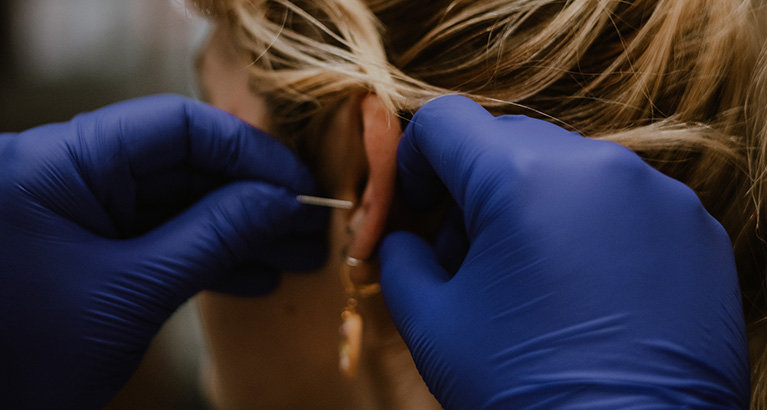
Caring for your new body piercing is crucial for a smooth healing process. We recommend this general guideline of the following aftercare steps to ensure your piercing heals perfectly.
Cleaning Your Piercing: Gently cleanse the area twice daily with a sterile saline solution, essential for preventing infections and ensuring the health of your piercing on the ear, nose, or any facial or body part.
Avoiding Irritation: Minimize touching the piercing to avoid irritation, while this is super important for nipple or nose piercings, this is a great guideline for all piercings.
Monitoring for Infection: Be vigilant for signs of infection, such as unusual redness, swelling, or discharge, and consult with our expert body piercers if symptoms arise.
Activity Restrictions: Limit activities that could stress the piercing area, especially important for those with an oral piercing or active lifestyles.
Frustrated with the piercing healing process? Check out our blog, “Body Piercing Healing – 10 Mistakes You’re Probably Making” for more info on things to avoid following your new piercing.
Using the right body piercing aftercare products makes all the difference.
We recommend NeilMed's saline solution for gentle cleansing and Cetaphil’s mild cleanser for safe daily care. Both are designed to protect and promote healing without irritation.
It’s also important to know what piercing aftercare products you should avoid. Make sure to avoid harsh chemicals like alcohol or hydrogen peroxide, as they can irritate the piercing and hinder healing.
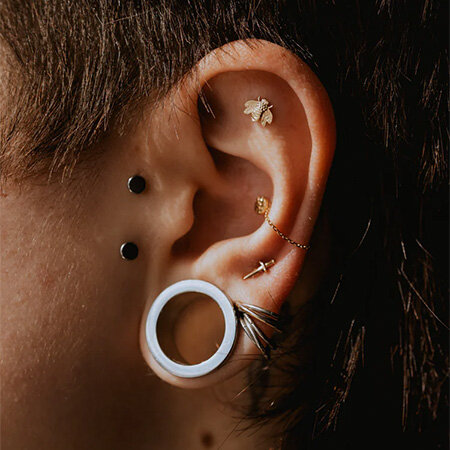
When your piercing heals, it’s time to swap out the basic body jewelry with something fun!
We offer high-quality body and piercing jewelry for belly button piercings, conch, daith, earlobe, eyebrow, helix, nipple, nostril, rook, septum, and tongue piercings.
Check out our online body jewelry store, you can search by brand, jewelry type, and piercing.
Not sure where to start with piercing jewelry? Check out our blog, “Threading Matters: Pick the Best Jewelry for Your Piercings” where we talk all things threading and finding the best jewelry for your piercing.
Once you find something you like, you can even try it on using our virtual piercing jewelry try-on software to get your Perfect Fit.
A: Pain levels vary by piercing location and individual tolerance. Generally, piercings cause a brief, sharp sensation, followed by mild discomfort.
A: Healing times vary by piercing type. Earlobes typically heal in 6-8 weeks, while cartilage and body piercings may take 3-6 months or longer.
A: Clean your piercing with a saline solution or mild cleanser as recommended. Avoid touching, rotating, or changing the jewelry too soon.
A: Avoid swimming in pools, hot tubs, lakes, and oceans until your piercing is fully healed to prevent infection.
A: If you notice signs of infection (redness, swelling, pus), contact one of our piercers or healthcare provider. Do not remove the jewelry.
A: Wait until your piercing is fully healed before changing jewelry. Your piercer will provide guidance during your appointment on the appropriate time for switching body jewelry.
A: Use high-quality, hypoallergenic materials like titanium, surgical steel, or niobium. Avoid cheap or non-sterile jewelry.
A: Clean with a saline solution or a gentle, non-alcoholic cleanser. Avoid using harsh chemicals like hydrogen peroxide or alcohol.
A: Consult with a healthcare provider before getting pierced if you have conditions like diabetes or immune disorders, as these can affect healing.
A: Avoid touching or rotating your piercing, sleeping on it, over-cleaning, and exposing it to dirty environments or harsh chemicals.
Have more questions about body piercing? Contact us.
It is recommended that persons with diabetes, hemophilia, auto-immune disorder, recipients of organ/bone marrow transplants, or persons taking blood thinning medications or persons with other medical or skin conditions that may hinder the healing process of your piercing, should consult your doctor before getting pierced. It is also advised that you inform your piercer of any metal allergies or allergies to certain healing agents that could be found in aftercare.
Oral piercings can affect the teeth and gums if proper jewelry is not selected. Your piercer will advise you on the type of jewelry you will require for healing your new piercing. This jewelry can be changed once the piercing is fully healed. Most often, the jewelry you are pierced with is longer than regular jewelry to allow for swelling. When the piercing is healed it is recommended that jewelry be switched to a more fitted piece to avoid damage to teeth and gums.
Ready for your next piercing? Visit one of our locations for a walk-in appointment!
Whether you're new to piercings or looking to update your jewelry, we’re here to guide you through every step of the process. Visit a Perfect Image tattoo shop near you or browse our online store for all your piercing and aftercare needs.
